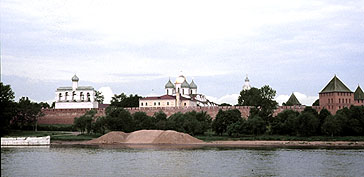![]()
What you must do in this unit
- Read the textbook chapters 9, 10, 11 and 12.
- Check the remarks by Professor Blois and Professor Evans on the development of the early Muscovite state. I also have a short video that I made for HIS 101 but which will also be useful here.
- Study the Questions to Consider and the Key Terms for the Unit.
- Post (or respond) with your thoughts/ideas/comments about this unit's reading in the discussion board in Canvas: What were some of the factors that allowed Moscow to expand its territorial control (5 points)?
What you can do in this unit
- Read chapter 6, chapter 7, chapter 8 and chapter 9 from Mary Platt Parmele (1843-1911) A Short History of Russia (1907, 4th edition). These are short chapters, and this is optional reading.
- You can watch my longish video, Some Longer Remarks on Medieval Moscow.
Some videos that you can watch for this unit
- Novgorod: The Heart of Medieval Russian Democracy Pines for Tourists
- Москвоведение. Иван III. Tsar Ivan III
- White Monuments of Vladimir and Suzdal
- Vladimir & Suzdal, Russia Travel Vlog 11 (Nice videography of these cities and cathedrals)
- For extra credit please suggest to your instructor a relevant video for this unit of the course. Send the title of the video, the URL and a brief explanation of why you find the video interesting and applicable to the material that is being studied in this unit.
Extra Credit Options
- For up to 25 points of extra credit, watch Andrei Rublev and write a one-page paper explaining Rublev's place in medieval Russia.
- For up to 25 points of extra credit, watch Aleksandr Nevskii and write a one-page paper making historical connection between 1938 with 1242. Also add some comments about the art of the film.
Unit Learning Objectives
- Upon successful completion of this unit, you will be able to (1) demonstrate knowledge and evolution of historical developments connected with the rise of Moscow.
